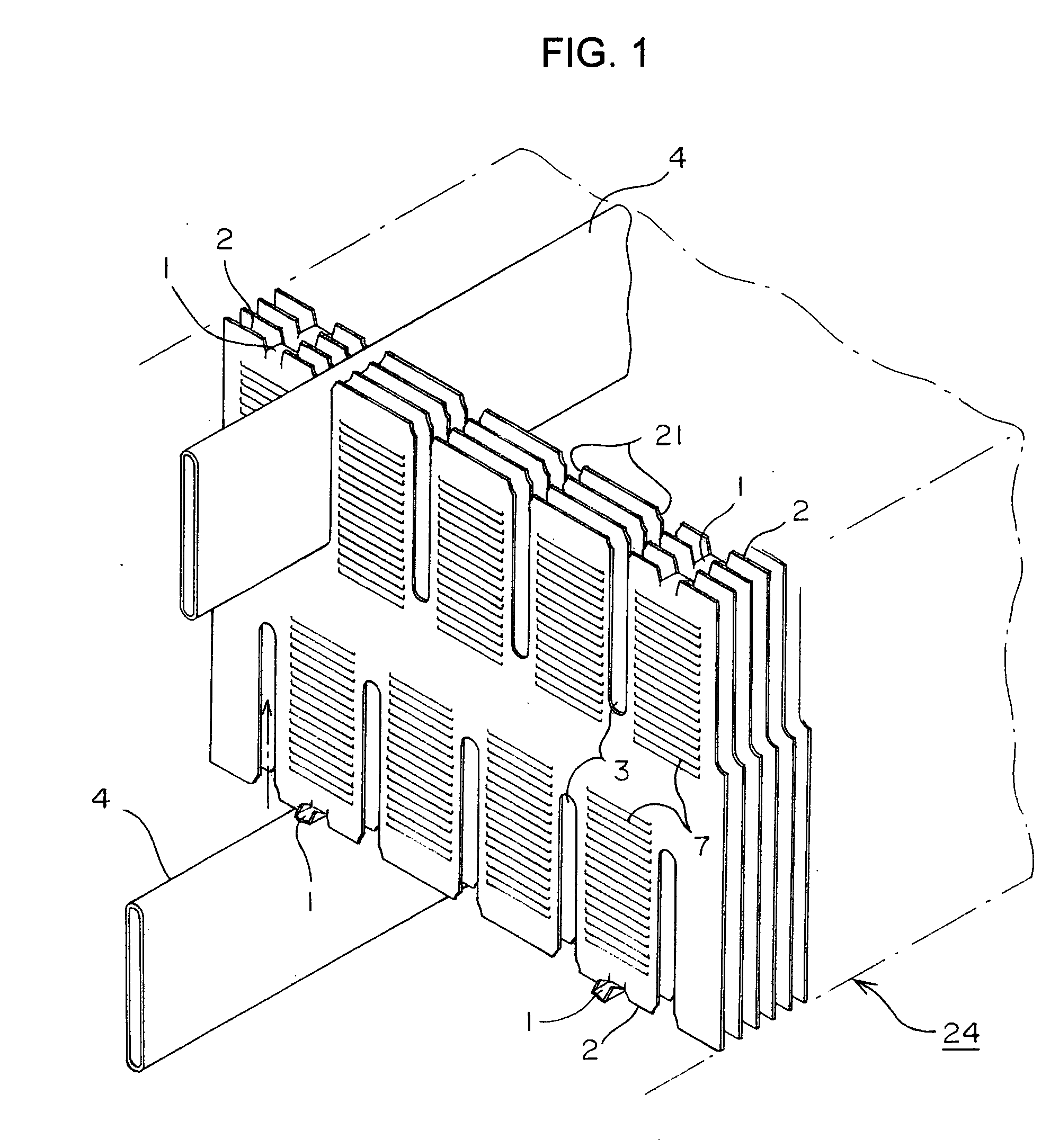Plate fin for heat exchanger and heat exchanger core
- Summary
- Abstract
- Description
- Claims
- Application Information
AI Technical Summary
Benefits of technology
Problems solved by technology
Method used
Image
Examples
Embodiment Construction
[0043] Now, an embodiment of the present invention will be described with reference to the drawings.
[0044]FIG. 1 is an exploded perspective view of an principal portion of a heat exchanger core in accordance with the present invention, FIG. 2 is an illustration showing a part of a plate fin thereof under manufacturing process, FIG. 3 is an illustration of the entire manufacturing process thereof, FIG. 4 is a plan view of an principal portion of a strip-shaped metal plate 18 under a press-forming process in FIG. 3, and FIG. 5 is an enlarged view of a portion V in FIG. 4. Further, FIG. 6 is a perspective view illustrating each connected portion 1 in aggregation 24 of the fin elements.
[0045] As shown in FIG. 1, the heat exchanger core is arranged so that a strip-shaped thin metal plate 18 is folded into a zigzag shape to form an aggregation 24 of fin elements. From the front side and the rear side in the thickness direction of the aggregation 24 of the fin elements, flat tubes 4 are ...
PUM
 Login to View More
Login to View More Abstract
Description
Claims
Application Information
 Login to View More
Login to View More - R&D
- Intellectual Property
- Life Sciences
- Materials
- Tech Scout
- Unparalleled Data Quality
- Higher Quality Content
- 60% Fewer Hallucinations
Browse by: Latest US Patents, China's latest patents, Technical Efficacy Thesaurus, Application Domain, Technology Topic, Popular Technical Reports.
© 2025 PatSnap. All rights reserved.Legal|Privacy policy|Modern Slavery Act Transparency Statement|Sitemap|About US| Contact US: help@patsnap.com



